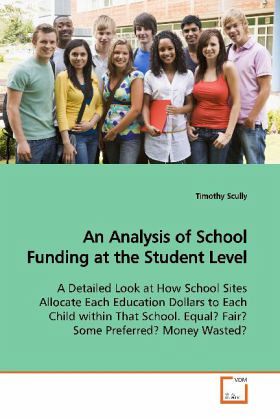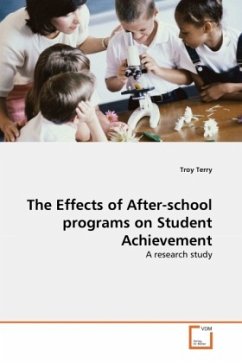
An Analysis of School Funding at the Student Level
A Detailed Look at How School Sites Allocate Each Education Dollars to Each Child within That School. Equal? Fair? Some Preferred? Money Wasted?
Versandkostenfrei!
Versandfertig in 6-10 Tagen
38,99 €
inkl. MwSt.

PAYBACK Punkte
19 °P sammeln!
Brown v Board removed the notion of separate butequal'' that had defined who could attend which school by a child s race. In California, Serrano v Priest determined that anareas wealth could not be used as a discriminating factor whenallocating dollars for a child s education, thus equalizing the amount of theState contribution to each child.The Prop. 13 tax revolt removed about 80% of thelocal control from School Districts and School Boards.Where the above actions addressed access and equity,no one had addressed what the cost should be to provide an adequate education. Those clamoring for ade...
Brown v Board removed the notion of separate but
equal'' that had
defined who could attend which school by a child s race.
In California, Serrano v Priest determined that an
areas wealth could
not be used as a discriminating factor when
allocating dollars for a
child s education, thus equalizing the amount of the
State
contribution to each child.
The Prop. 13 tax revolt removed about 80% of the
local control from
School Districts and School Boards.
Where the above actions addressed access and equity,
no one had
addressed what the cost should be to provide an adequate
education. Those clamoring for adequacy are being
joined by
others calling for efficiency in spending.
This work gives a detailed look at how each dollar
allocated per
child is spent. You will see a startling spending
range between
children.
This piece does not deal with academic outcomes. At
the start of this
study, the author was looking at production function
models and
cost-benefit analysis as means of determining if
student outcomes
where affected by spending. In each case multiiple
variables clouded
the effort to apply a business model to an education
setting. No
doubt it can be done.
equal'' that had
defined who could attend which school by a child s race.
In California, Serrano v Priest determined that an
areas wealth could
not be used as a discriminating factor when
allocating dollars for a
child s education, thus equalizing the amount of the
State
contribution to each child.
The Prop. 13 tax revolt removed about 80% of the
local control from
School Districts and School Boards.
Where the above actions addressed access and equity,
no one had
addressed what the cost should be to provide an adequate
education. Those clamoring for adequacy are being
joined by
others calling for efficiency in spending.
This work gives a detailed look at how each dollar
allocated per
child is spent. You will see a startling spending
range between
children.
This piece does not deal with academic outcomes. At
the start of this
study, the author was looking at production function
models and
cost-benefit analysis as means of determining if
student outcomes
where affected by spending. In each case multiiple
variables clouded
the effort to apply a business model to an education
setting. No
doubt it can be done.












